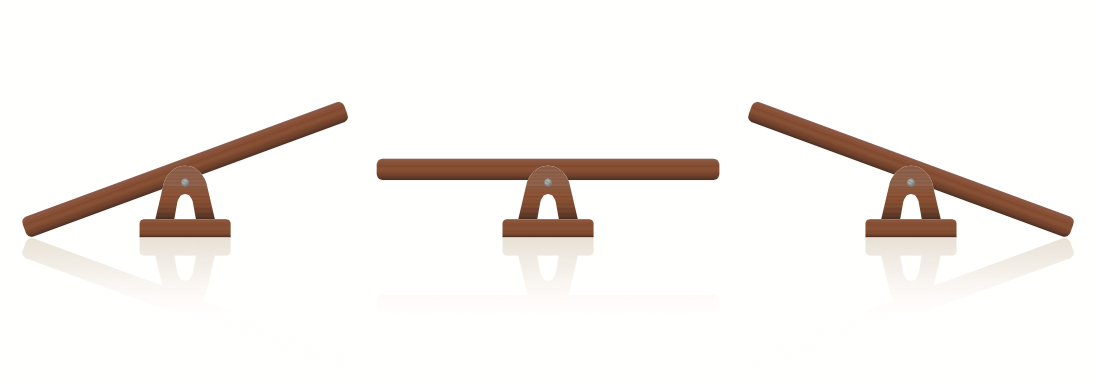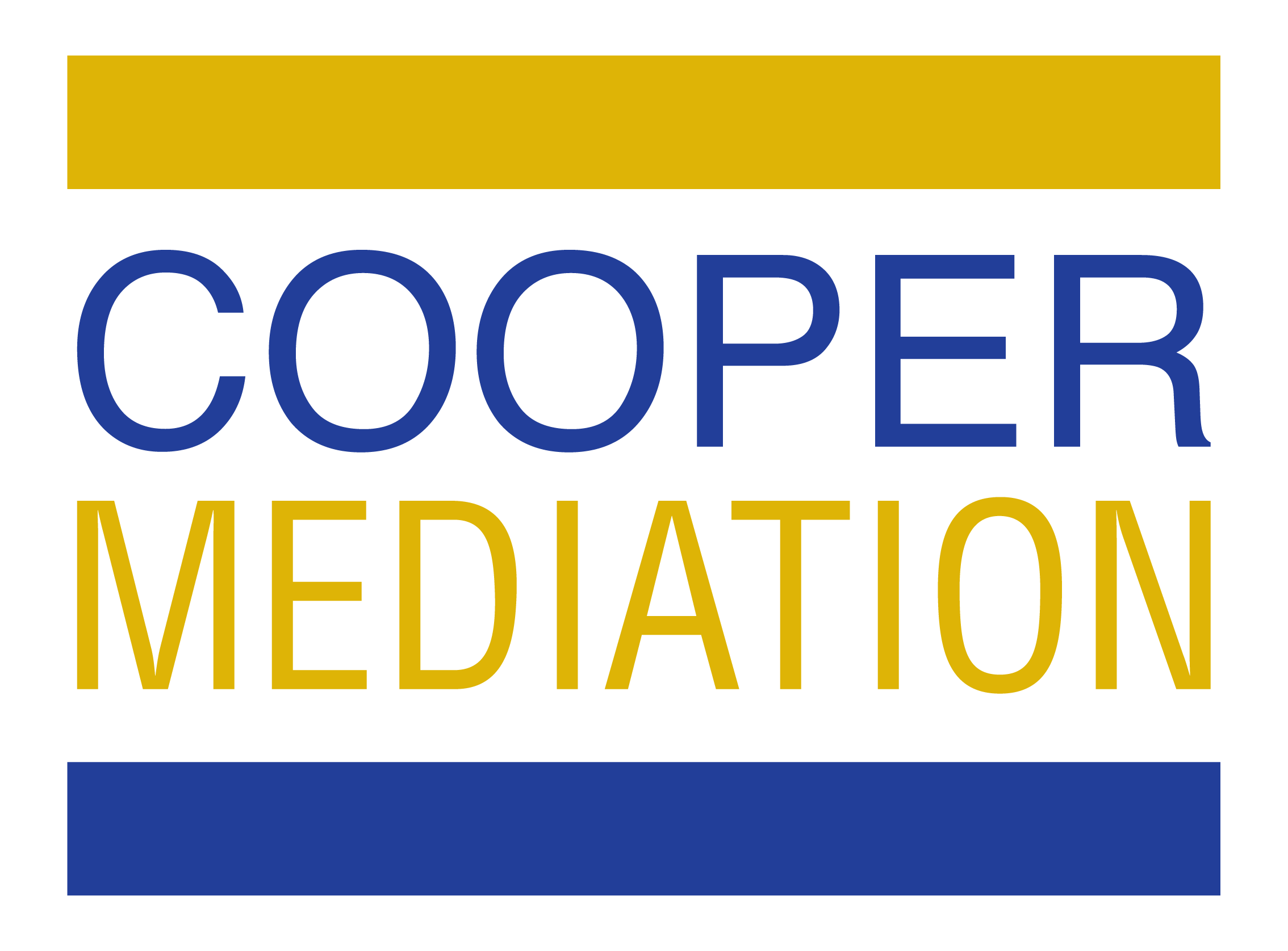
15 Dec Seesaws and Brackets
I know what you must be thinking after reading the title of this blog post. What do a playground toy and a piece of hardware have to do with negotiation and mediation? No, I haven’t lost my marbles. If you have a little patience and read on, you’ll see how this all makes perfect sense.
Let’s start with the words themselves. A seesaw (noun) is a long plank balanced in the middle on a fixed support, on each end of which children sit and swing up and down by pushing the ground alternately with their feet. To seesaw (verb) means to change rapidly and repeatedly from one position, situation, or condition to another and back again.
While you might think the second definition has more to do with negotiation and mediation than the first, it’s the playground toy that I want you to think about.
In a typical personal injury or insurance mediation, there are usually many issues in dispute. Unsurprisingly, those who represent plaintiffs present each and every item of damages at a very high level. If there is a liability dispute, those who represent plaintiffs will attempt to minimize the responsibility of their client and maximize the responsibility of the defendants. Conversely, those who represent defendants and their insurers will analyse the damages at very low levels or assert that there are no provable damages for some or all categories. The plaintiff’s liability will be maximized and their own client’s liability will be minimized.
Imagine a seesaw which represents the differing assessments for non-pecuniary general damages. What we have is a very low position on one end of the seesaw and a very high position on the other end of the seesaw. Now let’s compound the problem with the same seesaw analysis applicable to past loss of income or past long-term disability benefits, future loss of income or future long-term disability benefits, past and future care costs and loss of capacity to perform housekeeping and home maintenance. Let’s add extreme high and low analysis for each line item of an accident benefit claim [past and future]. Finally, let’s add the same seesaw approach to the liability issue [which includes causation, contingencies, litigation risks, etc.] to the mix.
The compounding use of extreme levers explains how and why an initial demand on the part of a plaintiff at mediation can be in excess of $1 million whereas an initial offer on the part of a defendant or insurer may not be greater than $50,000.
Invariably, these extreme and disparate offers lead to further challenges. One side or the other or both will suggest that they are being reasonable and the other side is not. One side, concerned about the demand or offer made by the other, will make a small move. The other side, observing an extreme offer with an incremental move, will feel obliged to make a similar incremental move.
One technique to get around this significant impasse is to move to “all-inclusive” demands and offers. Unfortunately, if the same seesaw analysis is performed to all of the constituent elements of a demand or an offer, the all-inclusive totals remain at the extreme high and extreme low levels.
I have encouraged those at mediation to consider making a significant “all-inclusive” move because they can camouflage their movement in one or more categories of damages or liability issues. Once again, I am usually faced with resistance and reluctance: “I will if they will”; “why would I show my cards”; “why would I bid against myself”; “they are not being reasonable”; “they are negotiating in bad faith”.
There is an option which has become particularly popular in the United States: brackets (not the hardware, but rather a particular segment of the range between parties). Indeed, this approach seems to be popular in red, blue and purple states – and that is really saying something in these divided times.
Bracketed demands and offers are framed as contingent or conditional offers. Let’s assume that the plaintiff’s last settlement demand, once fully totalled, comes to $1 million all-inclusive. The defendant’s last settlement offer comes to $75,000 all-inclusive. These are firm offers. By comparison, the bracketed approach would have the plaintiff present settlement brackets such that they commit to present a demand of $750,000 all-inclusive on condition that the defendant responds with an offer of $500,000 all-inclusive. The plaintiff’s brackets imply but do not promise resolution at the midpoint: $625,000 all-inclusive.
The defendant now has a choice. Are they prepared to negotiate within the plaintiff’s brackets? Highly unlikely. The defendant can propose a fresh set of brackets which may include the plaintiff’s low end figure [which is notionally acceptable to the plaintiff] or propose brackets which are below the plaintiff’s low end figure. Let’s assume that the defendant responds with a fresh set of brackets. The defence commits to offer $100,000 all-inclusive on condition that the plaintiff commits to present a demand of $260,000 all-inclusive. The defendant’s brackets imply but do not promise resolution at approximately $180,000 all-inclusive.
Technically, there have been no demands or offers exchanged. However, the participants to the negotiation and the mediator now have at least a sense that despite the official positions [$1 million versus $75,000], the unofficial positions are $625,000 and $180,000. The mediator can reverse engineer these figures to try to gain greater insight into valuations and/or attempt to determine whether these figures could become settlement brackets to continue further discussions. There is an opportunity to transition back to firm demands and offers [be that line by line, all-inclusive or otherwise].
It bears repeating that if bracketed negotiations do not advance settlement discussions to resolution, the official positions remain the last demands and offers made at mediation [though, to be fair, the plaintiff’s upper end bracket demand and the defendant’s lower end bracket offer do represent an express commitment to resolve that these positions].
For critics who look at brackets as nothing more than bartering in a market, I offer the following thoughts. I have frequently observed that mediation rarely provides a forum for one side to persuade the other that the former is right and the latter is wrong. I have also frequently observed that the reasons for a plaintiff to reduce their settlement demands and the reasons for a defendant or insurer to increase their settlement offers are seldom the same reasons. However, matters are nevertheless resolved because each side comes to the same or similar dollar figure for very different reasons.
Consequently, it is very important for each side to look critically at all aspects and facets of the matter in dispute. If the plaintiff has a realistic view of the strengths, weaknesses and risks associated with their claim, the ultimate settlement value will fall somewhere within the brackets proffered by the plaintiff. If the defendant (and decision-maker or granting body) has a similarly realistic view of the claim they are facing, the monetary authority in place will fall somewhere within the brackets proffered by the defendant. Brackets allow for the exploration of settlement prospects to take place behind the protective veil of a conditional demand/offer.
Now that you’ve read Brackets 101, I hope you will look forward to future blogs I have in the works that will take this concept to advanced and expert levels. As always, I welcome your thoughts, comments, questions and suggestions.
ABOUT THE AUTHOR
Vance Cooper is principal of Cooper Mediation Inc. Vance devotes 100% of his professional time to mediating and arbitrating primarily personal injury and insurance cases. He serves as an arbitrator in loss transfer and priority disputes under the Insurance Act. Vance is a Distinguished Fellow of the International Academy of Mediators, a Chartered Mediator of the ADR Institute of Canada and a Certified Mediator by the International Mediation Institute. He was also recently inducted to the Ontario Chapter of the Canadian Academy of Distinguished Neutrals (CADN).
Vance can be reached at vance@coopermediation.ca or (647) 777-4011.
To schedule a mediation with Vance, visit: https://coopermediation.ca/vances-online-calendar/.
